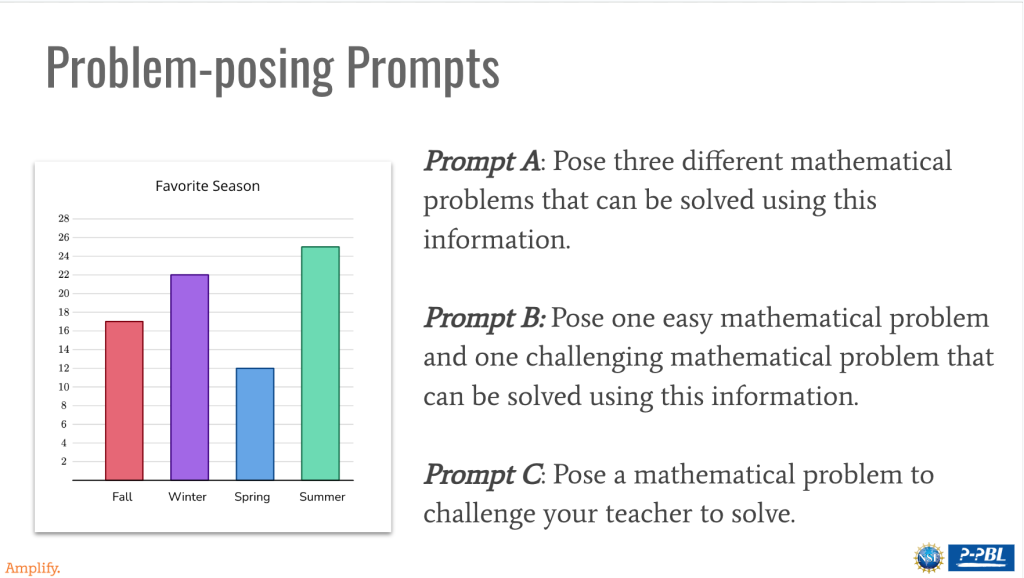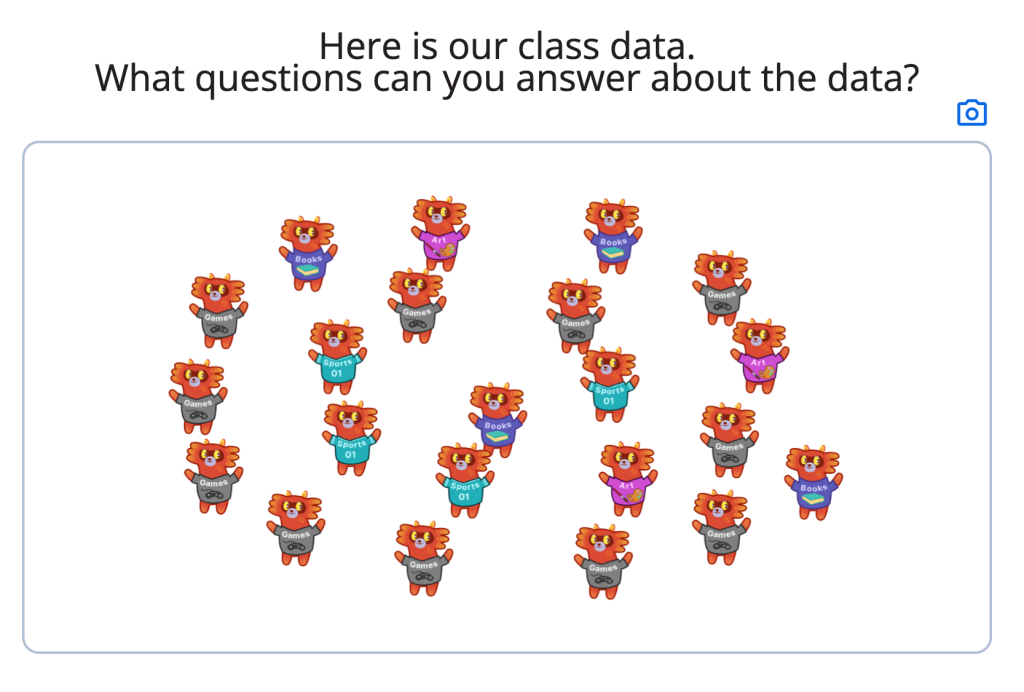I have blogged a few times about problem posing using print materials and lately I’ve become really interested and excited about the potential for digital tools in this work!
If you are new to problem posing, below are a few slides from Jinfa and my NCSM presentation for background – each image is linked to an associated research paper.
What is problem posing?


Many activities can easily be adapted to provide opportunities for problem posing by removing task questions (left) and replacing it with different prompt options (right).


How can digital tools enhance problem-posing experiences?
Being relatively new to both problem posing and digital lessons, I have learned so much trying things out in math classes this year. As always, the more I learn, the more questions/ideas I have. Below are two digital lessons that involve different flavors of problem posing.
Lesson 1: Our Curious Classroom
You can click through the lesson screens to see the full flow, but in a nutshell, students answer questions about themselves and explore different data displays.


After answering the first survey question, we asked students for problems they could answer about their class data and recorded their responses (sorry for the blurry image, I had to screenshot from a video clip:).

The students then worked at their table to answer the questions based on their choice of display.


The lesson continues with more survey questions, data display exploration, and ends with students personalizing their own curioso character (see bottom of post for unrelated, cute idea).
Things I learned:
- Student responses can be collected and displayed so quickly with digital which saved us more instructional time for posing and solving problems.
- The capability to see data displays dynamically change from one to another enhanced the discussion about which display was most helpful to answer the problems and why.
- Students were so motivated to answer questions about themselves, learn about their classmates (audio clip below), and ask and answer questions about their own class, not a fictitious one.
Things I wonder:
- While having the teacher record the questions on the board worked perfectly, I wonder if or how younger students might digitally input their own questions w/o wearing headphones for voice to text or having spelling errors that are challenging for others to interpret? Maybe something like a bank of refrigerator magnets to choose from?
- During the lesson, could the teacher input student questions onto cards in the Card Sort in Desmos so they could then sort the problems based on structure before solving?
Lesson 2: Puppy Pile
In this lesson, students generate a class collection of animals, are introduced to scaled bar graphs, and create scaled bar graphs. This one has a different problem-posing structure than the the first lesson which was interesting!
In this lesson, students use the Challenge Creator feature. In order to pose their problem to the class, students create their own set of animals (left) and then select a scale and create a bar graph (right).


After submitting their challenge, students then pick up one another’s problems and solve them.

Things I learned:
- Students were extremely motivated to create their own problems and solve the problems of others.
- This version of problem posing allowed students to have more control over the situation around which they were formulating problems, which they really enjoyed.
- Challenge Creator is an amazing tool for repeated practice that is MUCH more engaging than a worksheet of problems.
Things I wonder:
- How could this activity structure support or extend the problem posing experience in Lesson 1?
- What other K-5 math concepts would be great candidates for a Challenge Creator problem-posing activity?
Final thoughts
I think problem posing is such an important instructional structure whether done in print, digital, or a hybrid of the two. It is important, however, to also consider the math, student motivation, and amount of time students spend engaging in the problem-posing process when choosing the format we use.
I would love to hear about what you try, learn, and wonder whether you try these lessons or adapt other lessons for problem posing!
Unrelated by Adorable Idea…
After Lesson 1, Katie printed out their personalized Curiosos for the wall;)
